24+ Sample Security Project Plan
-
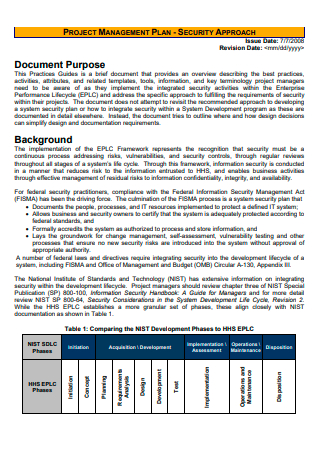
Security Approach Project Management Plan
download now -
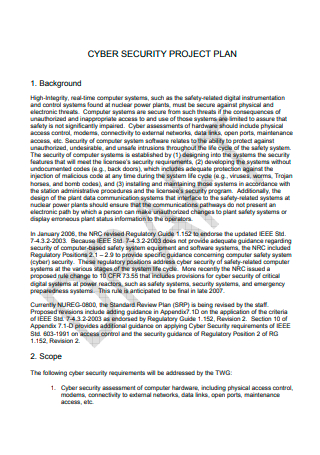
Cyber Security Project Plan
download now -
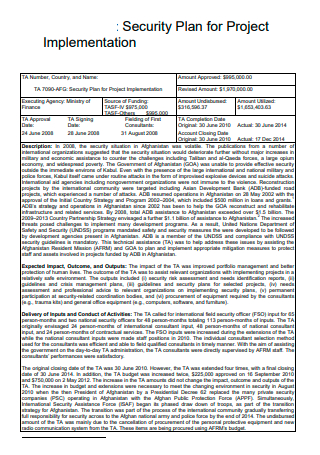
Security Project Implementation Plan
download now -
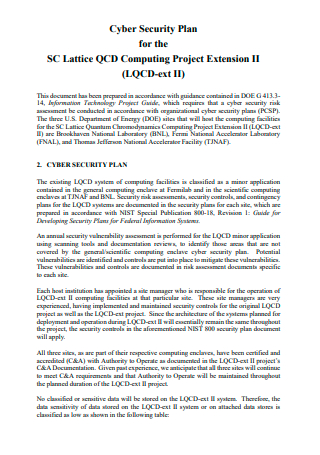
Cyber Security Computing Project Extension Plan
download now -
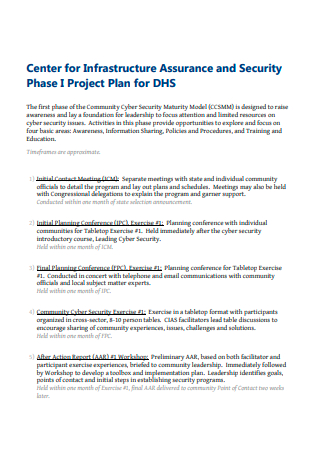
Infrastructure Assurance and Security Project Plan
download now -
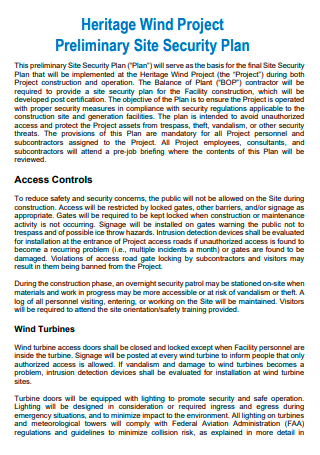
Preliminary Site Security Project Plan
download now -

Data Security Transfer Project Plan
download now -
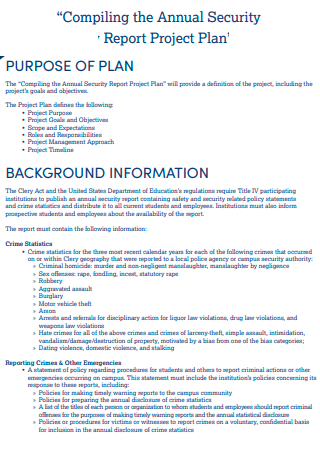
Compiling Annual Security Report Project Plan
download now -
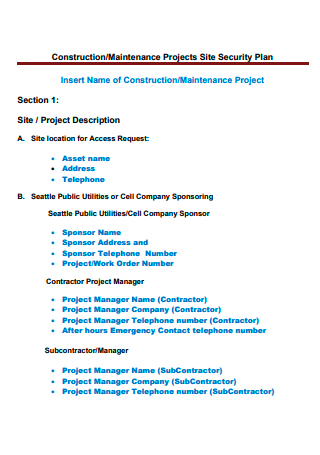
Construction Maintenance Site Security Project Plan
download now -

Hall Safety and Security Project Plan
download now -
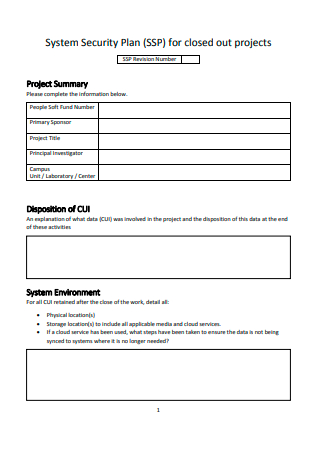
System Security Project Plan
download now -

Site Security Solar Project Plan
download now -
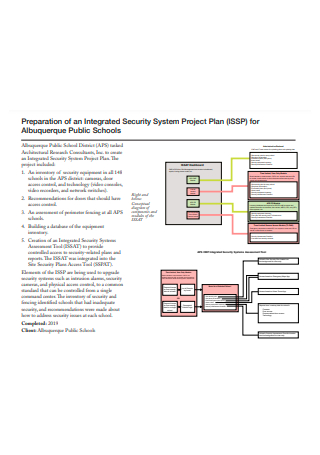
Security System Project Plan For Public Schools
download now -
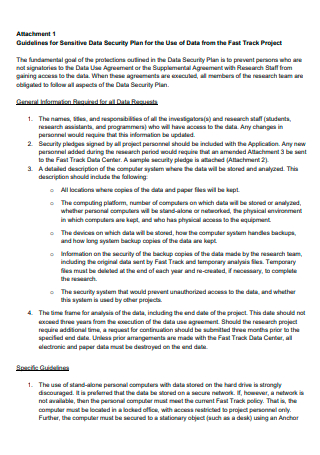
Security Project Plan in PDF
download now -
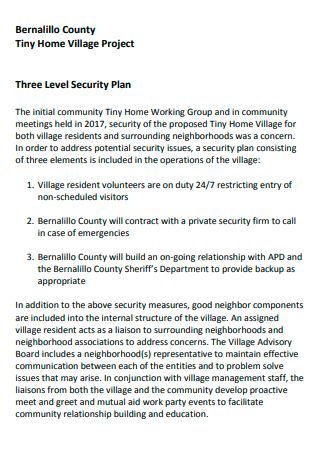
Three Level Security Project Plan
download now -

Security Project Plan Statement
download now -
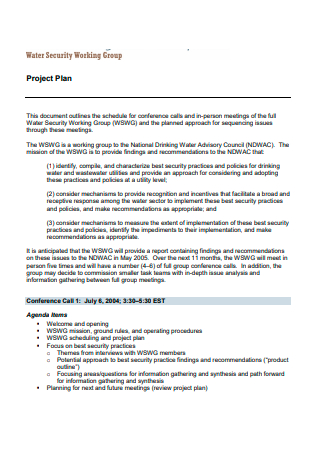
Water Security Working Group Project Plan
download now -
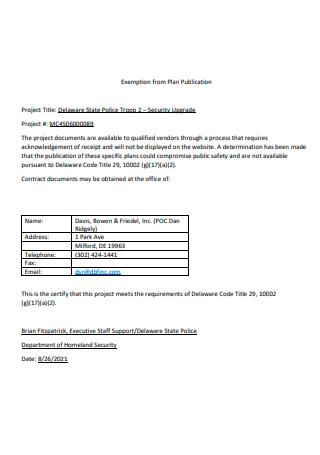
Security Upgrade Project Exemption Plan
download now -
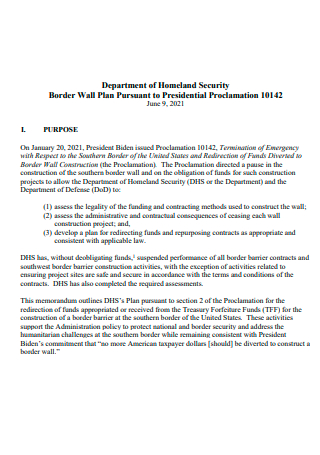
Home Land Security Project Plan
download now -
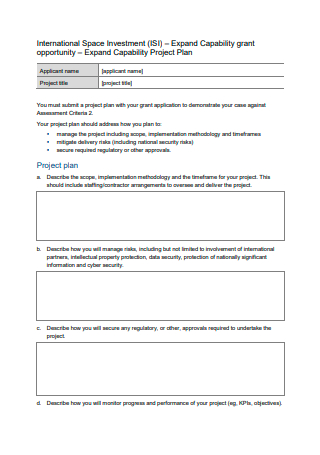
Security Project Plan Example
download now -
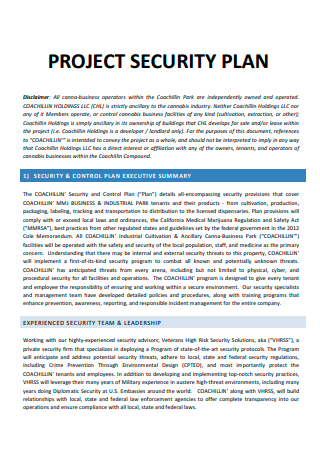
Printable Security Project Plan
download now -
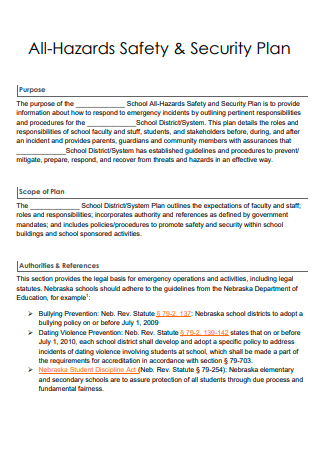
Hazards Safety and Security Plan
download now -
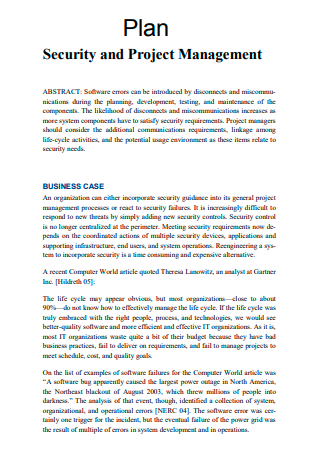
Security and Project Management Plan
download now -
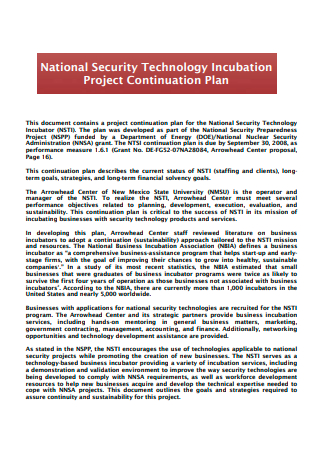
National Security Technology Incubation Project Continuation Plan
download now -

Security Project Work Plan
download now
FREE Security Project Plan s to Download
24+ Sample Security Project Plan
What Is a Security Project Plan?
What Is the Importance of Security Project Plan?
What Is Included in a Security Project Plan?
What Are the Elements of Security Project Plan?
How to Improve Security Project Plan?
How To Develop a Security Project Plan?
FAQs
Why Do I Need a Security Project Plan?
What Are the Three Basic Security Requirements?
How Can Security Be Both a Project and a Process?
What Is a Security Project Plan?
Security is complex and the combination of several factors. Some must always be present. Others can be added when needed. Together they constitute the security plan. A security plan has to decrease vulnerabilities and increase capacities so that threats are being reduced or made less feasible and therefore the risk is reduced. A security plan must fit your actual needs and work space. The point is not necessarily to cover a big sociopolitical space—rather to be within the right space and to cover as much of the working environment as possible, through networking and in conjunction with other organizations. Establish security procedures that transcend political differences. Security is the concern of all and it is individual, organizational and inter-organizational. Security is complex and is the result of several factors. Some must always be present. Others will be added at specific moments. Together they constitute the security plan. Your security plan should include day-to-day policies, measures and specific situation protocols. Both include political procedures and operational procedures.
What Is the Importance of Security Project Plan?
Security project plans can be in possession of the following benefits for an organization:
Facilitates Data Integrity, Availability, and Confidentiality
Effective information security policies standardize rules and processes that protect against vectors threatening data integrity, availability, and confidentiality.
Protects Sensitive Data
Information security policies prioritize the protection of intellectual property and sensitive data such as personally identifiable information.
Minimizes the Risk of Security Incidents
An information security policy helps organizations define procedures for identifying and mitigating vulnerabilities and risks. It also details quick responses to minimize damage during a security incident.
Executes Security Programs Across the Organization
Information security policies provide the framework for operationalizing procedures.
Provides a Clear Security Statement to Third Parties
Information security policies summarize the organization’s security posture and explain how the organization protects IT resources and assets. They facilitate quick response to third-party requests for information by customers, partners, and auditors.
Helps Comply With Regulatory Requirements
Creating an information security policy can help organizations identify security gaps related to regulatory requirements and address them.
What Is Included in a Security Project Plan?
Security project plans are important, but they are that easy to implement. Implementation is much more than a technical process; it is an organizational process. This means looking for entry points and opportunities, as well as barriers and problems. A security project plan must be implemented on at least three levels:
Examples of entry points and opportunities when implementing a security project plan:
- Several minor security incidents have taken place in your own or another organization and some staff members are worried about it.
- General security concerns exist because of the situation in the country.
- New staff arrives and can be trained to start good security practices more easily.
- Another organization offers you security training.
Examples of problems and barriers to implementing a security project plan:
- Some people think more security measures will lead to an even greater workload.
- Others think the organization already has good enough security.
- Assuming to not have time for this.
- Thinking it is fine to plan and discuss only once.
What Are the Elements of Security Project Plan?
A security plan includes elements that become political procedures—like meeting the authorities and international bodies, claiming the protection due from the state—and operational procedures such as routine preparations for a field mission.
Elements of permanent policies and measures for the ordinary work:
- The organization’s mandate, mission and general objectives (knowing and respecting them).
- An organizational statement on security policy.
- Security should cut across all aspects of daily work: context assessment, risk assessment and incident analysis, as well as security evaluation.
- How to ensure that all organization members are properly trained in security to the required level and that people’s security responsibilities are passed on when they leave the organization.
- Allocation of responsibilities: Who is expected to do what in which situation?
- How to handle a security crisis: Setting up a crisis committee or working group, delegating responsibility for handling the media, communicating with relatives, etc.
- Organizational security responsibilities: Planning, follow-up, insurance, civil responsibility, etc.
- Individual security responsibilities: continuing to reduce risk, how to handle free time or leisure activities, reporting and recording security incidents, sanctions some of these points could be included in work contracts, where relevant.
Organizational policies on:
- rest, free time and stress management
- the security of victims and witnesses
- health and accident prevention
- links with authorities, security forces and armed groups
- information management and storage, handling confidential documents and information
- your own image in relation to religious, social and cultural values
- security management in offices and homes (including for visitors)
- handling cash or valuables
- communication means and protocols
- vehicle maintenance
- security of women defenders
- security of LGBTI defenders
Elements of specific measures for extraordinary work and situations prevention and reaction protocols:
- preparing field trips
- landmines
- reducing the risk of getting involved in common crime, armed incidents or sexual attacks
- reducing the risk of accidents when travelling or in risky areas
- reaction protocols on: medical and psychological emergencies (also in the field)
- personal injury, attacks, including sexual attacks
- robbery
- when a person does not show up when they are supposed to
- arrest or detention
- abduction, disappearance
- fire and other accidents
- evacuation
- natural disasters
- legal or illegal searches or break-ins into offices or homes
- if a person comes under fire
- if someone is killed
How to Improve Security Project Plan?
Take advantage of opportunities and entry points to face problems and break through barriers.
- Proceed step-by-step. There is no point in pretending that everything can be done at once.
- Emphasize the importance of security to core work on behalf of victims. Stress that the security of witnesses and family members is critical to the effectiveness of core work and that this can best be managed by integrating good security practices into all areas of work. Use examples in training/discussion that demonstrate the potential negative impact of lax security on witnesses and victims.
- A plan drafted by two “experts” and presented to a whole organization is likely to fall flat on its face. In security, participation is key.
- A plan must be realistic and feasible. A long list of things to do before every field trip will not work. Keep to the bare minimum necessary to ensure security. This is another reason to involve those who really do the work.
- The plan is not a one-off document; it must be reviewed and updated all the time.
- The plan must not be seen as “more work”, but as “a better way to work”. People must be made to see the benefits, for example, by avoiding duplicate reporting. Make sure field trip reports have a security dimension, make security issues part of normal team meetings, integrate security aspects into other training, etc.
- Emphasize that security is not a personal choice. Individual decisions, attitudes and behavior that impacts on security can have consequences for the security of witnesses, family members of victims and colleagues. There needs to be a collective commitment to implementing good security practices.
- Time and resources must be allocated to implementing the plan, as security cannot be improved by using people’s free time. In order to be seen as “important”, security activities must be placed alongside other “important” activities.
- Everyone must be seen to follow the plan, especially managers and those responsible for other people’s work. There must be consequences for individuals who persistently refuse to abide by the plan.
How To Develop a Security Project Plan?
A security policy can be as broad as you want it to be, from everything related to IT security and the security of related physical assets, but enforceable in its full scope. The following list offers some important considerations when developing an information security policy:
Step 1: Purpose
First state the purpose of the policy, which may be to:
- Create an overall approach to information security.
- Detect and preempt information security breaches such as misuse of networks, data, applications, and computer systems.
- Maintain the reputation of the organization, and uphold ethical and legal responsibilities.
- Respect customer rights, including how to react to inquiries and complaints about non-compliance.
Step 2: Audience
Define the audience to whom the information security policy applies. You may also specify which audiences are out of the scope of the policy (for instance, staff in another business unit which manages security separately may not be in the scope of the policy).
Step 3: Information Security Objectives
Guide your management team to agree on well-defined objectives for strategy and security. Information security focuses on three main objectives:
- Confidentiality — Only individuals with authorization can access data and information assets.
- Integrity — Data should be intact, accurate and complete, and IT systems must be kept operational.
- Availability — Users should be able to access information or systems when needed.
Step 4: Authority and Access Control Policy
- Hierarchical pattern — A senior manager may have the authority to decide what data can be shared and with whom. The security policy may have different terms for a senior manager vs. a junior employee. The policy should outline the level of authority over data and IT systems for each organizational role.
- Network security policy — Users are only able to access company networks and servers via unique logins that demand authentication, including passwords, biometrics, ID cards, or tokens. You should monitor all systems and record all login attempts.
Step 5: Data Classification
The policy should classify data into categories, which may include top secret, secret, confidential, and public. Your objective in classifying data is:
- To ensure that sensitive data cannot be accessed by individuals with lower clearance levels
- To protect highly important data, and avoid needless security measures for unimportant data
Step 6: Data Support and Operations
- Data protection regulations — systems that store personal data, or other sensitive data — must be protected according to organizational standards, best practices, industry compliance standards, and relevant regulations. Most security standards require, at a minimum, encryption, a firewall, and anti-malware protection.
- Data backup — Encrypt data backup according to industry best practices. Securely store backup media, or move backup to secure cloud storage.
- Movement of data — Only transfer data via secure protocols. Encrypt any information copied to portable devices or transmitted across a public network.
Step 7: Security Awareness and Behavior
Share IT security policies with your staff. Conduct training sessions to inform employees of your security procedures and mechanisms, including data protection measures, access protection measures, and sensitive data classification.
- Social engineering — Place a special emphasis on the dangers of social engineering attacks (such as phishing emails). Make employees responsible for noticing, preventing and reporting such attacks.
- Clean desk policy — Secure laptops with a cable lock. Shred documents that are no longer needed. Keep printer areas clean so documents do not fall into the wrong hands.
- Acceptable Internet usage policy — Define how the Internet should be restricted. Do you allow YouTube, social media websites, etc.? Block unwanted websites using a proxy.
Step 8: Encryption Policy
Encryption involves encoding data to keep it inaccessible to or hidden from unauthorized parties. It helps protect data stored at rest and in transit between locations and ensure that sensitive, private, and proprietary data remains private. It can also improve the security of client-server communication. An encryption policy helps organizations define:
- The devices and media the organization must encrypt
- When encryption is mandatory
- The minimum standards applicable to the chosen encryption software
Step 9: Data Backup Policy
A data backup policy defines rules and procedures for making backup copies of data. It is an integral component of overall data protection, business continuity, and disaster recovery strategy. Here are key functions of a data backup policy:
- Identifies all information the organization needs to back up
- Determines the frequency of backups, for example, when to perform an initial full backup and when to run incremental backups
- Defines a storage location holding backup data
- Lists all roles in charge of backup processes, for example, a backup administrator and members of the IT team
Step 10: Responsibilities, Rights, and Duties of Personnel
Appoint staff to carry out user access reviews, education, change management, incident management, implementation, and periodic updates of the security policy. Responsibilities should be clearly defined as part of the security policy.
FAQs
Why Do I Need a Security Project Plan?
Security policies protect your organization’s critical information or intellectual property by clearly outlining employee responsibilities with regard to what information needs to be safeguarded and why.
What Are the Three Basic Security Requirements?
Regardless of security policy goals, one cannot completely ignore any of the three major requirements—confidentiality, integrity, and availability—which support one another. For instance, confidentiality is needed to protect passwords.
How Can Security Be Both a Project and a Process?
Security can be both a project and a process in the sense that companies can design security projects to upgrade their systems while undertaking a continual process to maintain and enhance these projects for the future.
In order for organizations to maintain a high level of information integrity and minimize risk, it is highly recommended that an organization implement security measures. Technical and organizational security measures are almost an everyday requirement in order to minimize risk while maintaining confidentiality, manageability and scalability of the organization. Security measures such as policies and regulations allow an organization to maintain, implement, administer and audit its security. If there are any threats or attacks to the organization, the measures help mitigate any risks as well as quickly implement countermeasures. It is imperative that organizations have strong security measures in place because not having them could be the difference between an organization staying in business for a long period of time and filing for bankruptcy.
